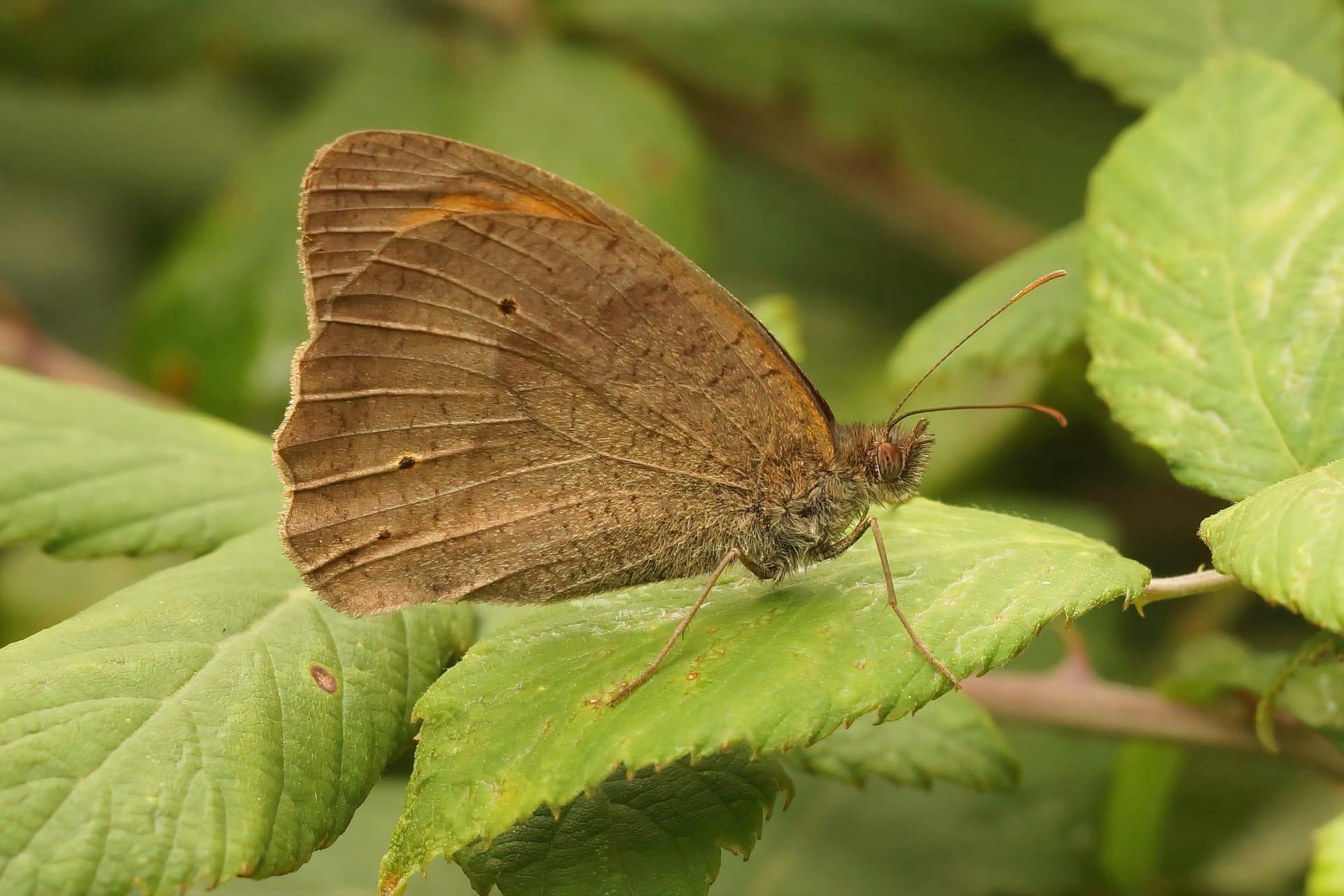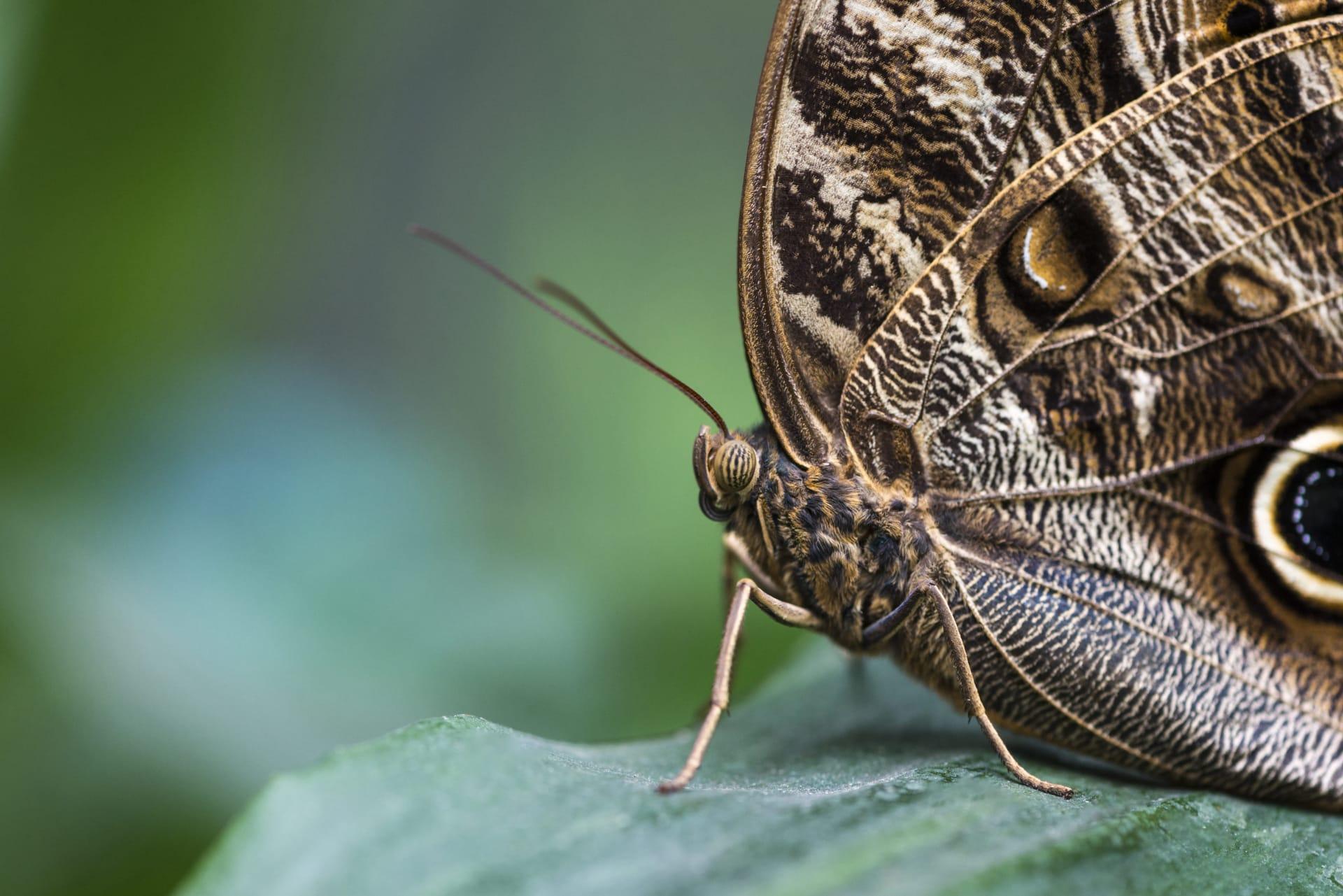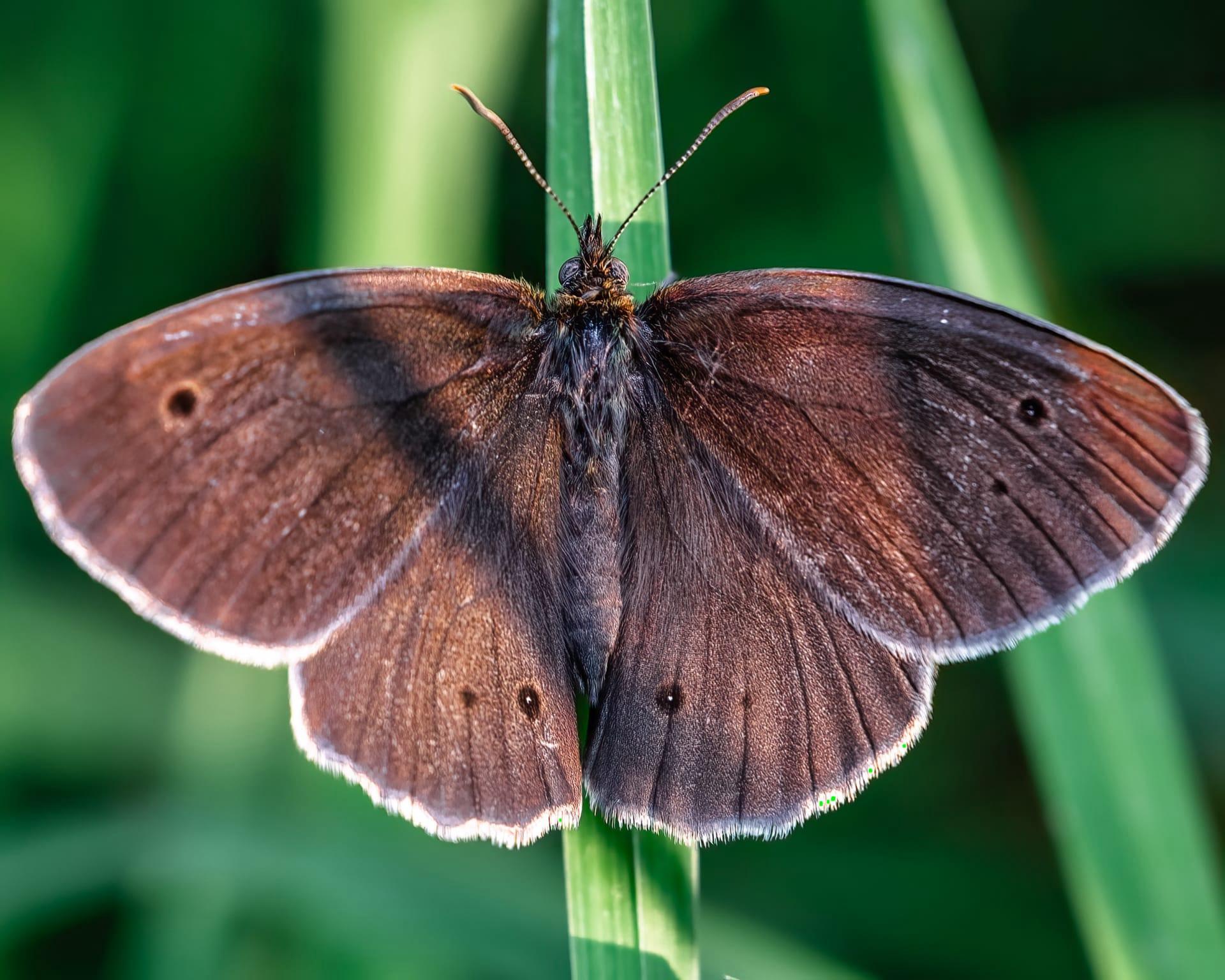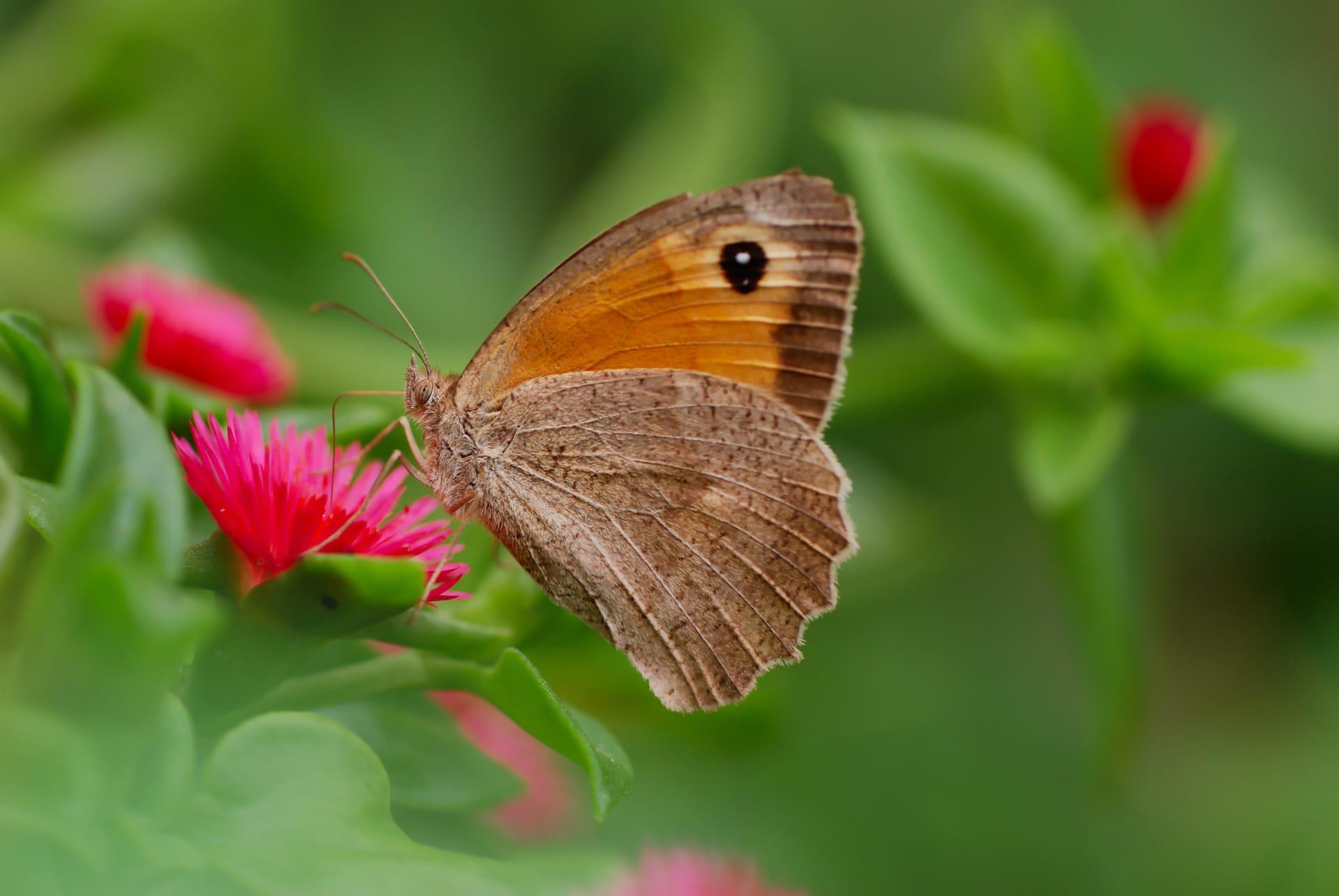Brown Butterfly Characteristics
- Home /
- Mini Encyclopedia /
- Animal /
- Brown Butterfly Characteristics
1
Brown butterflies, a diverse group within the Lepidoptera order, exhibit a range of sizes. Typically, their wingspan ranges from 1.2 to 4.7 inches (3 to 12 cm), making them a noticeable presence in their habitats. Their lifespan varies, with most living for about 2 to 4 weeks as adults, though some species can live up to 11 months in total, including their larval stages.
One of the most remarkable organs of the brown butterfly is its proboscis. This long, coiled tube, resting beneath their heads when not in use, is a feat of natural engineering. During feeding, it unfurls to sip nectar from flowers. The proboscis can reach deep into flowers, enabling the butterfly to access nectar that other insects can't, and it's equipped with sensors to help locate nectar.

2
Question: Why do brown butterflies often bask in the sun with their wings open?
Answer: Brown butterflies bask in the sun with their wings open to regulate their body temperature. This behavior is crucial for their survival and activity. Butterflies are cold-blooded or ectothermic, meaning they rely on external heat sources to warm their bodies. By basking, they absorb the sun’s warmth, increasing their body temperature to optimal levels for flying and other activities. The dark colors of their wings aid in absorbing heat more efficiently.

3
Brown butterflies are known for their unique flight patterns. They engage in a fluttering flight, characterized by a series of rapid wingbeats followed by periods of gliding. This erratic flight pattern helps them evade predators and navigate through their environment efficiently. Their flight speed can range from 5 to 12 miles per hour (8 to 19 km/h), depending on the species and environmental conditions.
As for feeding, these butterflies predominantly feed on nectar from flowers. Their proboscis allows them to extract nectar from a variety of flower shapes and sizes. They have a preference for brightly colored and fragrant flowers, which they can detect with their keen sense of smell. Besides nectar, some species may also feed on tree sap, rotten fruit, and even carrion.

4
Brown butterflies thrive in a variety of environments, ranging from tropical rainforests to temperate meadows and even urban gardens. Their habitat preference is largely dependent on the availability of food sources (nectar-rich flowers) and host plants for their larvae. Some species are highly adaptable and can thrive in disturbed or changing environments.
In terms of reproduction, brown butterflies exhibit fascinating characteristics. Females lay eggs on specific host plants, which caterpillars feed on after hatching. The choice of plant is crucial, as it directly affects the survival and growth of the larvae. Mating rituals vary by species, often involving visual cues and pheromone exchange. The entire lifecycle from egg to adult can span from a month to a year, depending on environmental conditions.

5
Book: "Wings of Change: The Life Cycle of the Brown Butterfly" by Emily Dawson. Published in the UK in 2018, this book offers an engaging exploration of the life cycle of brown butterflies. Dawson, a renowned entomologist, combines vivid photography with insightful commentary to detail each stage of the butterfly's life, from egg to caterpillar, pupa, and adult.
Book: "Butterflies of the Forest: Brown Butterfly Species and Their Habitats" by Carlos Mendez. A 2020 publication from Brazil, this book by biologist Mendez delves into the diverse species of brown butterflies found in various forest ecosystems. It highlights the relationship between these butterflies and their habitats, emphasizing conservation efforts and ecological impacts. Mendez's work is renowned for its detailed descriptions and beautiful illustrations of these delicate creatures.